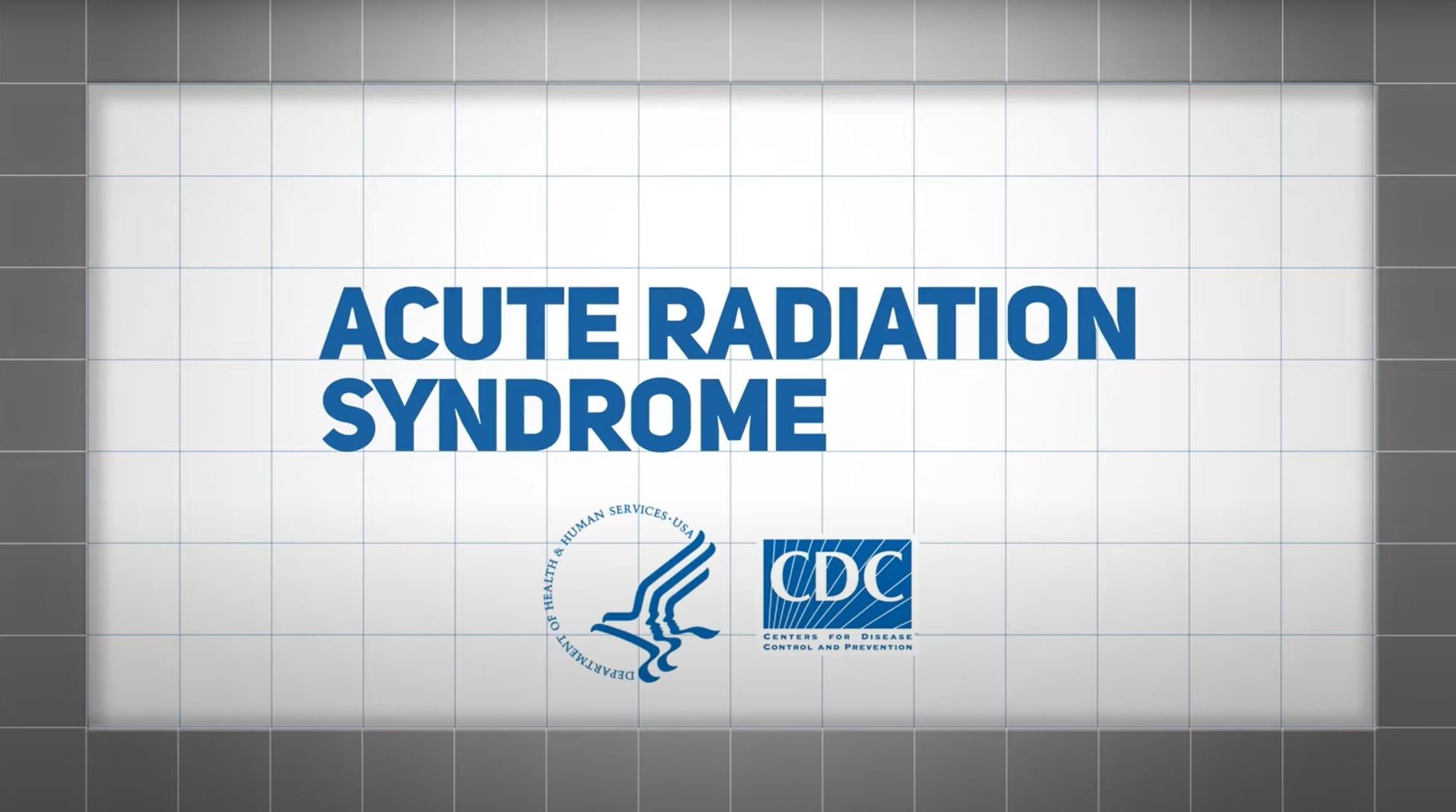At a glance
- Some symptoms of Acute Radiation Syndrome (ARS) include nausea, vomiting, and diarrhea.
- You will only get ARS if you have been exposed to a lot of radiation in a short timeframe.
- If you see any symptoms, seek medical attention after emergency officials say it is safe.

Radiation exposure
Medical emergencies
Acute Radiation Syndrome (ARS), or radiation sickness, is a serious illness. It can happen when you are exposed to very high levels of radiation, usually over a short period of time. The amount of radiation your body absorbs is called the radiation dose.
When exposed to radiation you will only get ARS if
- The radiation dose was high
- The radiation was able to reach internal organs (penetrating)
- Your entire body, or most of it, received the dose
- The radiation was received in a short time, usually within minutes
Symptoms
Early symptoms
Symptoms of ARS may include
- Nausea
- Vomiting
- Headache
- Diarrhea
These symptoms start within minutes to days after the exposure. They can last for minutes up to several days and may come and go.
Later symptoms
After the initial symptoms, you usually look and feel healthy for a period of time. After, you will become sick again, and symptoms and severity will vary depending on the radiation dose that you received. These symptoms include
- Loss of appetite
- Fatigue
- Fever
- Nausea
- Vomiting
- Diarrhea
- Seizures and coma
This seriously ill stage may last from a few hours up to several months.
Skin damage
Receiving a high radiation dose also can cause skin damage. This damage can start to show within a few hours after exposure or it may be delayed for several days. It can include
- Swelling
- Itching
- Redness of the skin (like a bad sunburn)
- Severe skin damage (like blisters or ulcers)
The skin may heal for a short time, followed by the return of swelling, itching, and redness days or weeks later.
Complete healing of the skin may take from several weeks up to a few years. The time it takes to heal depends on the radiation dose the person's skin received.
If you receive a high radiation dose to all or part of your body, you also may experience temporary hair loss. It may take several weeks for the hair to grow back.
If you experience ARS, you may develop Cutaneous Radiation Injuries (CRI). Not everyone who develops CRI will have ARS.
Symptoms of CRI can appear from a few hours to several days after exposure.
The early signs and symptoms of CRI include
- Itchiness
- Tingling
- Skin redness (erythema)
- Swelling caused by a buildup of fluid (edema)
Treatment
Treatment of ARS focuses on
- Reducing and treating infections
- Maintaining hydration
- Treating injuries and burns
The lower the radiation dose, the more likely it is that the person will recover from ARS.
Some patients may benefit from treatments that help the bone marrow recover its function.
The cause of death in most cases is the destruction of the person's bone marrow. This results in infections and internal bleeding. For survivors of ARS, the recovery process may last from several weeks up to 2 years.
